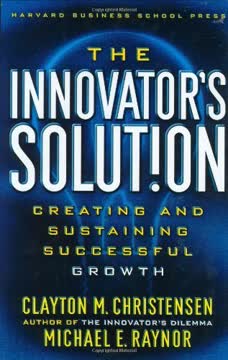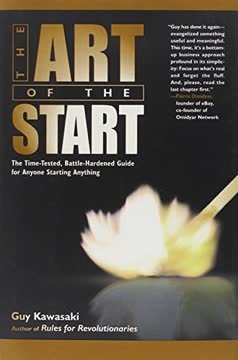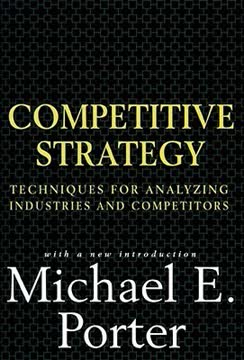Key Takeaways
1. Deconstruct Your Idea into a Business Model
A Lean Canvas replaces long and boring business plans with a 1-page business model that takes 20 minutes to create and that actually gets read.
Visualize your idea. The Lean Canvas is a rapid idea capture tool that helps entrepreneurs deconstruct their ideas into key assumptions. It consists of 12 distinct boxes that cover all aspects of a business model, including customer segments, problems, unique value proposition, solution, channels, revenue streams, cost structure, key metrics, and unfair advantage.
Simplify and focus. Unlike traditional business plans that take weeks to write and are seldom kept up-to-date, a Lean Canvas can be sketched quickly in one sitting. This process forces entrepreneurs to distill their business model down to its essence, making it easier to communicate and test.
Key components of Lean Canvas:
- Customer Segments
- Problems
- Unique Value Proposition
- Solution
- Channels
- Revenue Streams
- Cost Structure
- Key Metrics
- Unfair Advantage
2. Love the Problem, Not Your Solution
New problems worth solving come from old solutions.
Avoid solution bias. Entrepreneurs often fall into the trap of inventing problems to justify their preconceived solutions. This "Innovator's Bias" can lead to building products that nobody wants. Instead, focus on understanding and loving the problem before jumping to solutions.
Find switching triggers. Successful innovations often solve old problems that people have been tolerating or working around. Look for "switching triggering events" that break existing solutions and cause people to switch to new ones. This approach helps identify real problems worth solving and increases the chances of creating a product that customers actually want.
Examples of successful switches:
- Cassettes to CDs: Instant song access
- CDs to MP3 players: Buy individual songs
- MP3 players to streaming: Access to millions of songs
3. Traction is the Goal: Test Viability with a Fermi Estimate
Traction is the rate at which a business model captures monetizable value from its customers.
Define success metrics. Start by setting a Minimum Success Criteria (MSC) - the smallest outcome that would deem your project a success in 3 years. This helps align your efforts and provides a benchmark for testing your business model's viability.
Use quick estimates. Instead of creating complex financial forecasts, use a Fermi estimate to quickly test your business model's viability. This back-of-the-envelope calculation helps determine if your idea has a chance of hitting your MSC based on key assumptions like pricing, customer lifetime, and conversion rates.
Key steps in Fermi estimation:
- Set Minimum Success Criteria (e.g., $10M ARR in 3 years)
- Determine required number of active customers
- Calculate minimum customer acquisition rate
- Estimate required number of leads
- Adjust business model if necessary
4. Identify and Test Your Riskiest Assumptions First
If you don't know where you are going, any road will take you there.
Prioritize risks. Not all assumptions in your business model carry equal weight. Identify the riskiest assumptions - those that, if proven wrong, would cause your entire business model to fail. These are often related to the problem-solution fit, pricing, or customer acquisition.
Test systematically. Once you've identified your riskiest assumptions, design small and fast experiments to test them. This approach allows you to quickly validate or invalidate key aspects of your business model before investing significant time and resources.
Common risky assumptions:
- Customer problem existence and urgency
- Willingness to pay
- Customer acquisition costs
- Conversion rates
- Customer lifetime value
5. Start with Customers, Not Investors
If you can demonstrate any traction at all, it sets you apart from the pack.
Focus on customer validation. Instead of rushing to pitch investors, prioritize engaging with potential customers. This customer-centric approach helps validate your problem-solution fit and generates early traction, which is far more valuable to investors than a polished pitch deck.
Build a customer pipeline. Develop a systematic process for identifying, reaching out to, and learning from potential customers. This not only helps refine your product but also creates a base of early adopters who can provide testimonials and referrals.
Customer discovery process:
- Identify potential customers
- Reach out and schedule interviews
- Conduct problem discovery interviews
- Present solution concepts and gather feedback
- Iterate based on learnings
6. Define Your Minimum Viable Product (MVP) Through Customer Discovery
A minimum viable product (MVP) is the smallest solution that creates, delivers, and captures customer value.
Start small and focused. Rather than building a full-featured product, identify the core value proposition that solves your customers' most pressing problems. This allows you to launch faster, learn quicker, and iterate based on real customer feedback.
Validate before building. Use customer interviews and low-fidelity prototypes to validate your MVP concept before investing in development. This "Demo-Sell-Build" approach, as opposed to "Build-Demo-Sell," ensures you're building something customers actually want and are willing to pay for.
MVP validation steps:
- Define core value proposition
- Create low-fidelity prototypes or mockups
- Conduct solution interviews with potential customers
- Gather pre-orders or letters of intent
- Build only what's necessary to deliver core value
7. Craft a Compelling Pitch by Understanding Different Worldviews
Good entrepreneurship is NOT about brute-forcing your solution, but rather framing a business model story in terms of your audience's pre-existing worldview.
Tailor your message. Different stakeholders (investors, customers, advisors) have different worldviews and priorities. Craft your pitch to address their specific concerns and interests, rather than using a one-size-fits-all approach.
Focus on value and outcomes. Instead of dwelling on features or technology, emphasize the value your solution provides and the outcomes it enables for your target audience. This helps create a more compelling and relatable story that resonates with your listeners.
Key worldviews to consider:
- Investor worldview: Market size, monetization, defensibility
- Customer worldview: Problems, desired outcomes, ease of adoption
- Advisor worldview: Risks, opportunities, personal experiences
- Competitor worldview: Differentiation, positioning, market dynamics
8. Use the Hero's Journey to Create an Engaging Elevator Pitch
You are the guide character.
Make the customer the hero. In your elevator pitch, position your customer as the hero of the story, not yourself or your product. This approach makes your pitch more relatable and engaging, as it focuses on the customer's journey and transformation.
Structure your pitch like a story. Use the classic Hero's Journey structure to create a compelling narrative arc in your elevator pitch. This includes establishing the current situation (Before), introducing a triggering event, highlighting what's at stake, and positioning your solution as the guide that helps the hero overcome their challenges.
Elements of a Hero's Journey elevator pitch:
- Introduce the hero (customer) and their current situation
- Present the triggering event or challenge
- Highlight what's at stake if the problem isn't solved
- Position your solution as the guide or magical gift
- Paint a picture of the transformed future state
Last updated:
FAQ
What's "Running Lean" about?
- Iterative Process: "Running Lean" by Ash Maurya is about iterating from an initial business idea (Plan A) to a plan that works by systematically testing and validating business models.
- Lean Canvas: The book introduces the Lean Canvas, a one-page business model that helps entrepreneurs deconstruct their ideas into key assumptions and test them.
- Mindset Shift: It emphasizes a shift from a build-first approach to a traction-first approach, focusing on customer problems rather than solutions.
- Continuous Innovation: The book outlines a framework for continuous innovation, helping entrepreneurs adapt and refine their business models in response to real-world feedback.
Why should I read "Running Lean"?
- Practical Guidance: The book offers practical, step-by-step guidance for entrepreneurs looking to validate and refine their business ideas.
- Avoid Common Pitfalls: It helps readers avoid common entrepreneurial pitfalls, such as building products that nobody wants or failing to secure stakeholder buy-in.
- Proven Framework: Ash Maurya provides a proven framework for systematically testing business models, which can increase the odds of success.
- Real-World Examples: The book includes real-world examples and case studies that illustrate the application of its principles.
What are the key takeaways of "Running Lean"?
- Business Model as Product: Treat your business model as a product that needs to be tested and validated, not just your solution.
- Focus on Traction: Traction is the ultimate goal, and it involves demonstrating that your business model works by achieving market adoption.
- Prioritize Risks: Identify and prioritize the riskiest assumptions in your business model and test them first.
- Iterative Learning: Use a cycle of modeling, prioritizing, and testing to continuously learn and adapt your business model.
What is the Lean Canvas, and how is it used in "Running Lean"?
- One-Page Business Model: The Lean Canvas is a one-page business model that helps entrepreneurs capture their ideas quickly and clearly.
- Key Assumptions: It breaks down a business idea into key assumptions, such as customer segments, problems, solutions, and revenue streams.
- Dynamic Model: Unlike traditional business plans, the Lean Canvas is a dynamic model that can be updated and refined as new information is gathered.
- Focus on Risks: It helps entrepreneurs focus on identifying and testing the riskiest parts of their business model first.
How does "Running Lean" define traction?
- Monetizable Value: Traction is defined as the rate at which a business model captures monetizable value from its customers.
- Evidence of Demand: It serves as evidence that there is demand for your product and that your business model is working.
- Investor Interest: Traction is crucial for attracting investors, as it demonstrates that your business has potential for growth and profitability.
- Customer Engagement: It involves customer engagement and adoption, indicating that your product is solving a real problem.
What is the "Innovator's Bias" mentioned in "Running Lean"?
- Solution-Centric Thinking: Innovator's Bias refers to the tendency of entrepreneurs to focus too much on their solution rather than the customer's problem.
- Inventing Problems: Entrepreneurs may unconsciously invent problems to justify their solution, rather than identifying real customer needs.
- Overcoming Bias: The book suggests overcoming this bias by focusing on customer problems and existing alternatives to uncover real problems worth solving.
- Innovator's Gift: The Innovator's Gift is the realization that new problems worth solving come from old solutions, guiding entrepreneurs to frame problems in terms of existing alternatives.
What is the "Traction-First Approach" in "Running Lean"?
- Focus on Market Adoption: The Traction-First Approach emphasizes achieving market adoption before building a complete product.
- Customer Validation: It involves validating customer demand and securing early adopters before investing heavily in product development.
- Avoiding the Build Trap: This approach helps avoid the build trap, where entrepreneurs spend too much time perfecting a product without validating demand.
- Iterative Development: It encourages iterative development, where entrepreneurs build, test, and refine their product based on customer feedback.
How does "Running Lean" suggest testing business model assumptions?
- Prioritize Risks: Identify the riskiest assumptions in your business model and prioritize testing them first.
- Small Experiments: Use small, fast experiments to test assumptions and gather evidence to support or refute them.
- Customer Interviews: Conduct customer interviews to validate assumptions about customer segments, problems, and solutions.
- Iterative Process: Continuously iterate on your business model based on the results of your tests and experiments.
What are the "Nine Mindsets" in "Running Lean"?
- Model Mindsets: Treat your business model as a product, love the problem not the solution, and focus on traction.
- Prioritize Mindsets: Take the right action at the right time, roll out in stages, and place many small bets.
- Test Mindsets: Make evidence-based decisions, prioritize discovery before validation, and recognize that breakthroughs require unexpected outcomes.
- Continuous Innovation: These mindsets support the continuous innovation framework, helping entrepreneurs adapt and refine their business models.
What is the "Minimum Viable Product" (MVP) according to "Running Lean"?
- Smallest Solution: An MVP is the smallest solution that creates, delivers, and captures customer value.
- Customer Validation: It is used to validate customer demand and gather feedback before building a complete product.
- Avoid Overbuilding: The MVP approach helps avoid overbuilding by focusing on delivering just enough value to test assumptions.
- Iterative Refinement: Entrepreneurs can iterate and refine their MVP based on customer feedback and learning.
How does "Running Lean" address the "Catch-22" of startups?
- Traction vs. Resources: The Catch-22 refers to the challenge of needing traction to secure resources, but needing resources to achieve traction.
- Traction-First Approach: The book suggests a traction-first approach, where entrepreneurs focus on achieving market adoption before seeking investment.
- Customer Engagement: By engaging customers early and validating demand, entrepreneurs can demonstrate traction and attract resources.
- Iterative Learning: Continuous learning and adaptation help entrepreneurs navigate the Catch-22 and build a sustainable business model.
What are the best quotes from "Running Lean" and what do they mean?
- "Your business model is the product." This quote emphasizes the importance of treating the business model as a product that needs to be tested and validated, not just the solution.
- "Love the problem, not your solution." It highlights the need to focus on customer problems rather than being attached to a specific solution.
- "Traction is the goal." This quote underscores the importance of achieving market adoption and demonstrating that the business model works.
- "Breakthrough requires unexpected outcomes." It suggests that innovation often comes from unexpected insights and learning, encouraging entrepreneurs to embrace uncertainty.
Review Summary
Running Lean is praised as a practical guide for entrepreneurs, offering step-by-step instructions on developing and testing business ideas. Readers appreciate its focus on customer feedback, lean methodology, and risk reduction. Many consider it essential reading for startups, complementing other lean business books. The book's emphasis on rapid iteration, MVP development, and systematic testing resonates with entrepreneurs. Some readers find it particularly useful for tech startups, while others see its applicability in various fields. A few criticisms mention its focus on B2C examples and potential overlap with other lean startup literature.
Similar Books










Download PDF
Download EPUB
.epub digital book format is ideal for reading ebooks on phones, tablets, and e-readers.




